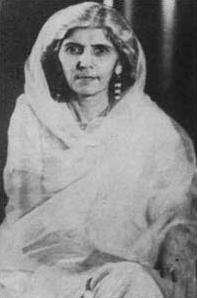Pakistani presidential election, 1965
| | ||||||||||||||||||||
| ||||||||||||||||||||
| ||||||||||||||||||||
| ||||||||||||||||||||
 |
| This article is part of a series on the politics and government of Pakistan |
| Constitution |
|
Presidential elections were held in Pakistan on 2 January 1965. The vote was held amongst the 80,000 "basic democrats", who were members of the urban and regional councils.
There were two major parties contesting the election: the Convention Muslim League and the Combined Opposition Parties. The Combined Opposition Parties consisted of five major opposition parties. It had a nine-point program, which included restoration of direct elections, adult franchise and democratization of the 1962 Constitution. The opposition parties of Combined Opposition Parties were not united and did not possess any unity of thought and action. They were unable to select presidential candidates from amongst themselves; therefore they selected Fatima Jinnah as their candidate.
Candidates
There were four candidates; Ayub Khan, Fatima Jinnah and two obscure people with no party affiliation. There was a short campaigning period of one month, which was further restricted to nine projection meetings that were organized by the Election Commission and were attended only by the members of the Electoral College and members of the press. The public was barred from attending the projection meetings, which would have enhanced Fatima Jinnah's image.[1]
Ayub Khan
Khan had a great advantage over the rest of the candidates. The Second Amendment of the Constitution confirmed him as President till the election of his successor. Armed with the wide-ranging constitutional powers of a President, he exercised complete control over all governmental machinery during elections. He utilized the state facilities as head of state, not as the President of the Convention Muslim League or a presidential candidate, and didn't even hesitate to legislate on electoral matters.
Fatima Jinnah
The campaign however suffered from a number of drawbacks. An unfair and unequal election campaign, poor finances, and indirect elections through the Basic Democracy System were some of the basic problems she faced. Miss Fatima Jinnah lost the election of 1965 and Ayub Khan was reelected as the President of Pakistan. [2]
Results and Aftermath
On the indirect ballot, Ayub Khan defeated Fatima Jinnah by taking 64% of the vote.
It is believed that had the elections been held via the direct method, Fatima Jinnah would have won. The Electoral College consisted of only 80,000 Basic Democrats, who were easily manipulated. The importance of this election lay in the fact that a woman was contesting the highest political office of the country. The orthodox religious political parties, including the Jamaat-e-Islami led by Maulana Maududi, which had repeatedly declared that a woman could not hold the highest office of a Muslim country, modified their stance and supported the candidature of Miss Fatima Jinnah. The election showed that the people had no prejudice against women holding high offices, and they could be key players in politics of the country.[3]
See also
References
- ↑ Trouble with Mother. Time Magazine Friday, Dec. 25, 1964
- ↑ Presidential Elections
- ↑ Women in Politics - Problems of Participation: A Case Study of Pakistan by Dr. Dushka H. Saiyid
